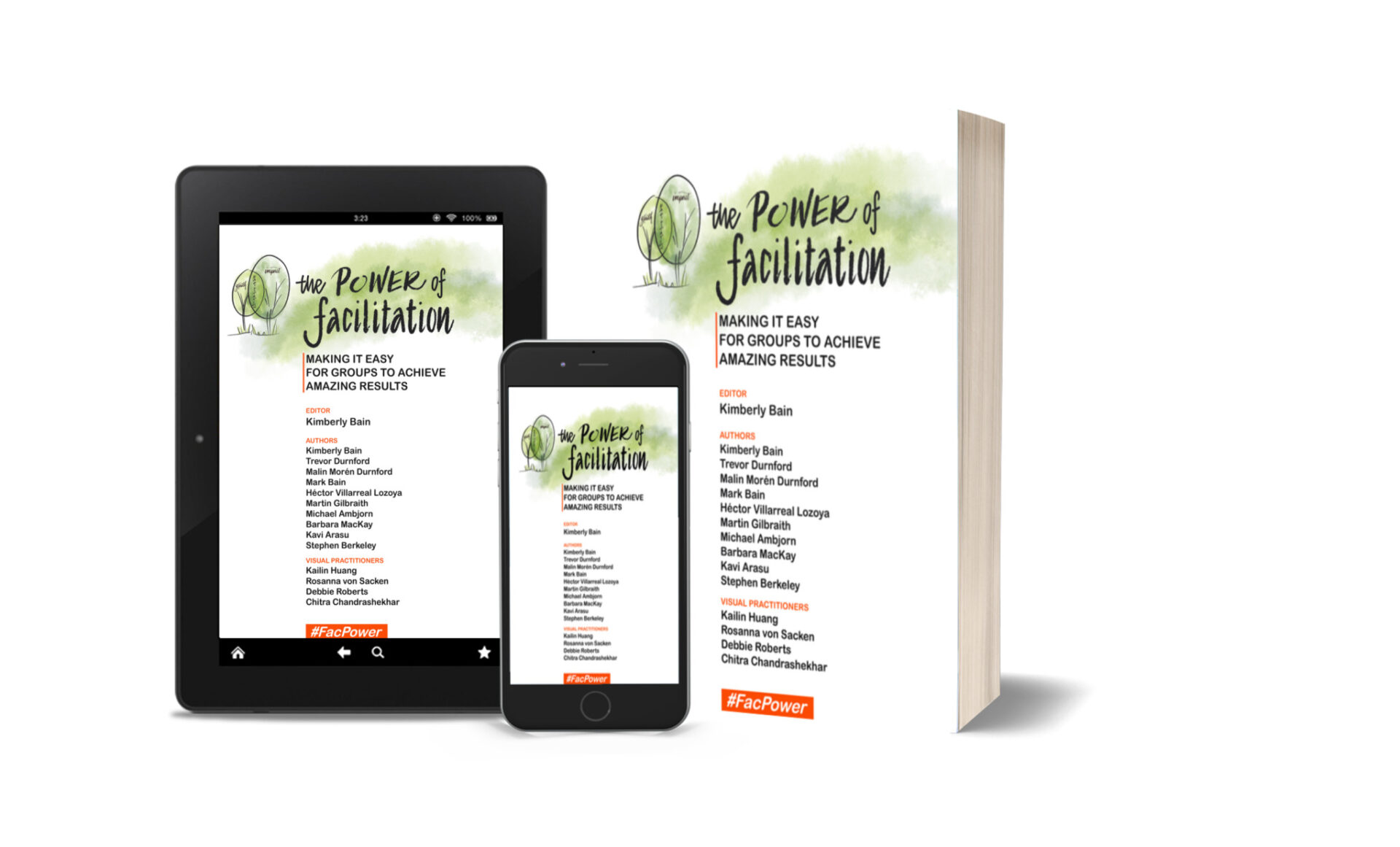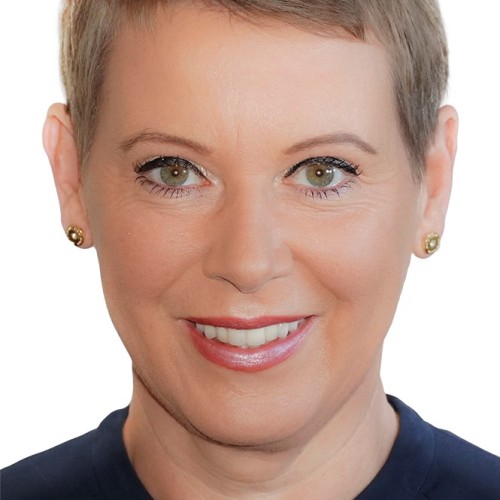Creating profound change: an interview with Malin Morén and Trevor Durnford

No team wants to create meaningless change. We want the changes we make to our teams and organizations to be radical and impactful. What’s more, we want to collaborate effectively and ensure everyone in the group can contribute to making changes they believe in.
But how can we best motivate teams who might be resistant to change? How can we help leaders and their teams come together to self-organize change and how might co-facilitation bring something special to the table?
To celebrate the launch of The Power of Facilitation – a new book about how groups can use facilitation to create great results – we’re speaking to the contributors to the book about their approaches and ideas.
In this interview, we spoke to Malin Morén and Trevor Durnford – a married couple who co-facilitate and work on creating radical collaboration with their organisation Facil Profundo. We talk about creating meaningful change, the benefits of co-facilitation, and how to pick potential internal facilitators out of the crowd!
Let’s have a look!
Hi Malin and Trevor! What are the benefits and challenges you find in co-facilitation?
Whilst we’re both Certified Professional Facilitators we have quite different backgrounds – Malin is from behavioral science and Trevor first qualified as a Mechanical engineer. So, for example, Malin’s strength is in human systems and mine is in process and technology which means that when facilitating an exec team on a range of transformation work they have in their sights, we can see things from quite different perspectives whilst both having a common grounding in facilitation.
One tip we give is not to be too ‘heavy-handed’ with both facilitators running a session. See it more as a good tv production where one hands over to the other and then steps out of the limelight.
What advice would you give to people co-facilitating for the first time?
For those co-facilitating for the first time, it’s well worth exploring the role and domain each will take on. For example, while one is guiding the group from the front, the other can be observing the group’s dynamics.
Alternatively, there might be convenient steps in the agenda where the roles could change. One tip we also give is not to be too ‘heavy-handed’ with both facilitators running a session, see it more as a good tv production where one hands over to the other and then steps out of the limelight.
We often talk about the role of facilitation in creating real, profound and meaningful change. How do we do that?
One belief we hold is that we humans support what we build ourselves. So if an entire organization can create a vision collaboratively, then the support for it will be 1000 times stronger than if it was shaped by an Exec team guided by external consultants.
Change that is in words only rather than behavior is not profound….words are cheap, behavior counts. Or when the leadership community is easily distracted to try a newer, flashier transformation project sweeping away the previous activities, roles, and resources. That’s not profound change.

How can the leader of a virtual team help create a more collaborative environment? What are the challenges they must overcome in this virtual space?
One of the good things to emerge from the pandemic is the technology that is now available to help teams collaborate virtually both synchronously and asynchronously.
One way in which leaders can really help create a collaborative environment is to get familiar with tools that help with creativity and collaboration when the team is on the same call/virtual meeting (e.g. Wonder, Mural/Miro, Menti) and also tools that enable team members to share and create new knowledge and insights asynchronously (eg Howspace).
The days of everyone dialing into the same meeting to listen to one present person Powerpoint slides are hopefully over….where’s the Power and what’s the Point!
The leaders should consider themselves a ‘host’ (see Host Leadership by Mark McKergow) where it’s the leader’s role to create the best space possible for the team to collaborate….and then get out of the way!
Rather than spending energy trying to persuade those who resist, just focus on where there is a culture of experimentation and positivity and welcome others who want to join in when they are ready.
How do you promote self organizing change? Is there ever a risk with this kind of change?
Self-organizing change, by its very nature, will always create a certain level of uncertainty and disagreement but we must live with that to reap the benefits that this type of change brings – innovation, novelty, and engagement. Getting clear on the future perfect or vision and some defining principles or essentials tends to help avoid chaos.
How do you help a group resistant to change become comfortable testing, failing, learning?
Our start point would be to explore parts of an organization where there is a positive atmosphere already….go where the energy is. It’s a little like the famous video of ‘Leadership and the Dancing Guy’. Rather than spending energy trying to persuade those who resist, just focus on where there is a culture of experimentation and positivity and welcome others who want to join in when they are ready.
In situations where there is no choice about location and the teams in question are ‘resistant’ we often find that it’s simply that the vision isn’t compelling enough so creating a dialogue around the future and exploring needs around change will unblock many groups.
Isn’t it interesting that we take leaders away for leadership development when 80% of the attributes are useful for us all to develop?
How do you enable a team to continue creating change after the workshop, training or briefing is complete? What techniques do you use?
Simple check-in questions at regular meetings such as ‘What’s better, what’s next?’ or ‘What are the signs that we are making progress?’ and ensuring the leaders are able to ask these questions and facilitate the response from the group.
We find that change is much more successful when it is a part of the regular team conversation in the regular team setting rather than something that is only discussed offsite or in a workshop. So coaching leaders to be good hosts or facilitators with carefully crafted dialogue guides is essential to success.
What advice would you give to an organization trying to create a team of internal facilitators? How do you find and support these people?
There’s a handful of characteristics we would recommend:
- Excellent communication skills especially listening, asking questions and reflecting/paraphrasing
- Resilient individuals
- Ability to develop rapport with a group
- Positive, resourceful mindset
- Huge appetite for learning, hungry for personal development and willing to coach others too!
- Comfortable participating in group discussions
- Ability to help the group / individuals reach results applying appropriate tools and techniques
- From any level in the organisation
Do you have a favourite method or technique for teaching a group how to practice self leadership?
We have a good way of highlighting its importance. Split a team into two groups. Group 1 creates a list of the top attributes of good leaders. Group 2 creates a list of the top attributes of a good employee/team member.
The teams present to each other and are usually surprised to see that the lists are 80% the same. Things like passionate, trustworthy, focused, compassionate, supportive, challenging, etc usually emerge from both lists.
The major takeaway is that, isn’t it interesting that we take leaders away for leadership development when 80% of the attributes are useful for us all to develop? So why don’t we do that together!
What facilitation skills are useful when it comes to enabling transformational change?
Of course, the IAF facilitator competencies and ethics are vitally important. What is an additional benefit in the context of change, is for facilitators to grasp the difference between complicated change and complex change.
Once the distinctions are grasped, then it’s much easier to choose the best facilitation methods and tools. For example, if the change being facilitated is complicated such as a process redesign or reduction in waste, then problem solving tools and looking for root causes makes sense.
On the other hand, if it’s complex, then a different approach is more valuable such as Solutions Focus, Appreciative Inquiry, or adaptive thinking. The Cynefin framework is a good way to see the distinctions between these. A good change facilitator knows the type of change in which they are intervening.
You run the annual conference Faciliteringsdagarna (Facilitation Days). What is the most valuable element of this conference for you?
Coming to Faciliteringsdagarna enables participants to get answers to many of the questions they are wrestling with by having conversations with facilitators that work in a wide range of organizations…and with clients who use facilitators in their organizations too.
What we like about Faciliteringsdagarna is that the sessions have real substance and you can tell that many of the speakers have a lot of experience of working with groups.
You facilitate team retreats in a beautiful environment in Uruguay. What’s the secret to a successful team retreat?
Freedom to choose, wonderful climate, and beautiful inspiring surroundings and activities that build a group by giving a memorable experience like riding horses on the beach, helping with wine harvesting, and cooking a fabulous Uruguayan style BBQ called an Asado. And of course, a few glasses of good wine tends to help a little too.
About Malin Morén and Trevor Durnford

Malin and Trevor are passionate professional facilitators with a remarkable reputation. Described as “leading lights” when it comes to transforming culture and leadership in organizations, and with a never-ending commitment to get people in flow to achieve radical collaboration and building high-performing teams.

Originally from Sweden and the UK, they now live in Uruguay where they continue to work with clients face to face and virtually in between tending to the vineyard and horses on the farm.
You can find out more about Malin and Trevor and get in touch on their website.



Leave a Comment